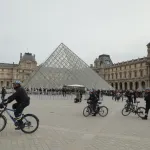
A federal court earlier this month dismissed a lawsuit against the Japanese company Sompo Holdings surrounding Vincent van Gogh’s Sunflowers (1888), which the heirs of a German Jewish banker said had been looted by the Nazis.
The company bought the work from Christie’s London in 1987 for $39.9 million, a record at the time. The heirs of its previous owner, Paul von Mendelssohn-Bartholdy had sought to get it back, claiming that it had been stolen during World War II.
According to the Art Newspaper, Mendelssohn-Bartholdy’s heirs claimed that Sompo Holdings ignored the work’s potential provenance issues. A judge in Illinois, however, dismissed the case due to lack of jurisdiction over the Tokyo-based holdings company.
The lawsuit was filed in Illinois in part because Sompo has business dealings in the state and because the picture had been part of the 2001 exhibition “Van Gogh and Gauguin: The Studio of the South” at the Art Institute of Chicago. During negotiations with Sompo’s museum in Tokyo, a museum official allegedly told the Art Institute that there was concern over the work’s provenance, and that that while they believed Sunflowers nothing to do with Nazi-looted art, they were “not 100% sure.”
According to the complaint, filed in December 2022, the heirs claim that Mendelssohn-Bartholdy “never intended to transfer any of his paintings and that he was forced to transfer them only because of threats and economic pressures by the Nazi government.”
Mendelssohn-Bartholdy sold the painting in 1934, and died of natural causes the year afterward. He lost both his job and his bank under Hitler’s rule, and the lack of contemporaneous sales records makes it unclear if Mendelssohn-Bartholdy was forced to sell the work for less than it was worth.
The plaintiffs, Julius H. Schoeps, Britt-Marie Enhoerning, and Florence von Kesselstatt, who filed the lawsuit on behalf of more than 30 additional beneficiaries, sought to reclaim the $250 million painting along with $750 million in punitive damages.
Sunflowers is part of a group of three such paintings Van Gogh made in 1888 and 1889. The other two are in the Van Gogh Museum in Amsterdam and London’s National Gallery.
